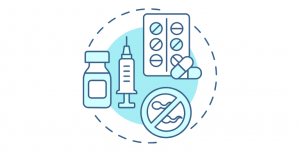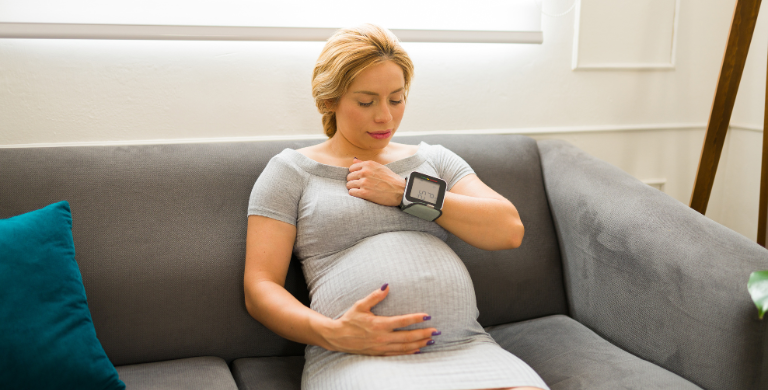Birth control allows us to prevent pregnancy and plan the timing of pregnancy.
Birth control choices are highly individual and also acceptable for multiple reasons including personal as well as public health. Here are some facts about safe and effective options available, to help you make an informed decision about contraception that is right for you.
Personal reasons to use contraception include:
- Postponing pregnancy until financially or professionally ready
- Avoidance of pregnancy for social, medical, surgical or other reasons
- Spacing of children
- Limiting family size
Public health reasons for contraception include:
- Population size control
- Avoid consequences of unwanted pregnancies e.g. abortions – legal and illegal
- Improve maternal mortality and morbidity in reproduction
When you have to choose a contraception method, consider the following factors:
- Effectiveness of the methods
- Safety of the method
- Availability
- Social and religious acceptability
- Accessibility
The Life table method is used to measure the effectiveness or failure rate of a specific method, using the percentage of women falling pregnant when using a particular method in the first year of use. Other methods e.g. Pearl index state it as the number of conceptions occurring among 100 women using the specific method per year.
|
NATURAL OR NON-HORMONAL CONTRACEPTION |
||||
|
METHOD |
FAILURE RATE |
TECHNIQUE |
ADVANTAGES |
DISADVANTAGES |
|
Abstinence |
0% |
Avoid penetrative sex |
Very safe for pregnancy prevention and diseases |
Will cause marital discourse |
|
Withdrawal |
20-25% |
Male withdraws male organ just prior to ejaculation |
Natural, no side effects |
Late withdrawal, non-withdrawal due to pleasure at time makes it very unreliable |
|
Rhythm |
15-25% |
Use law of averages, relying on knowledge that most women ovulate on day 14 of cycle, thus avoid coitus from days 11-16 |
Natural, no side effects |
Some women ovulate earlier or later the average dates |
|
Sympto-thermal |
15-25% |
Check temperature rise to predict ovulation |
Natural, no side effects |
Such a drill for women, high failure rate |
|
Barriers – male and female condoms |
10-20% |
Latex or Silastic recepticle to trap sperms |
Protection against STDs and HIV |
Late insertion, non-insertion, leak, rupture, late removal increase failure rate |
|
Shield, foam and gels |
15-20% |
Agent in foam or gel which is spermicidal |
Easy to use. Recent association with HIV prevention agents |
Forgotten, bad press about infections |
|
Sterilisation |
<1% |
Tubes tied off preventing sperms and eggs from meeting |
Needs a small operation |
Not reversible, surgical discomfort, ectopic pregnancy, heavier periods compared to other methods |
|
Male sterilization |
<1% |
Surgical sterilisation i.e. vasectomy very effective |
Male resistance a hindrance |
|
|
HORMONAL CONTRACEPTION |
||||
|
METHOD |
FAILURE RATE |
MECHANISM OF ACTION |
ADVANTAGES |
DISADVANTAGES |
|
Progesterone only pills (Mini-pill) |
2-4% |
Inhibits ovulation, makes endometrium non-receptive to early pregnancy |
Very low side effect profile |
High failure rate, may hold periods back, some breakthrough bleeding may occur |
|
Combined pills |
1-2% |
Inhibits ovulations, makes cervical mucus hostile to sperms, makes endometrium unreceptive to early pregnancy |
Reduces menstrual flow, dysmenorrhoea, risks of ovarian and endometrial cancer. Other uses acne control, management of heavy periods |
Oestrogen risk of deep vein thrombosis, fluid retention, headaches, nausea, vomiting, weight gain. Cannot be used in severe diabetics or hypertensive |
|
Injectables |
1-2% |
Interferes with ovulation, makes endometrium unreceptive to pregnancy |
Once every 2-3months, reduces forgotten doses |
Injections, painful, androgenic side effects on skin, headaches. No menses in 40%, abnormal bleeding in 30-40% |
|
Implants |
<1%. |
Implant under skin. Progesterone effects on ovulation and endometrium |
Work for 3-5 years. Not patient dependent |
Androgenic side effects of progesterone, as per injectables |
|
Emergency contraceptives |
5-10% |
Can be used 3-5 days after unprotected coitus. Pills work under 3 days, intrauterine devices work up to 5 days |
Pills can cause nausea and vomiting, increasing failure rate |
|
Medical dictionary
Ovulation: The release of eggs from the ovaries
Endometrium: The lining of the womb where the fertilized egg attaches and grows
Hormones: Oestrogen and progesterone produced by growing eggs in the ovaries
Sources:
Intercare Medfem Hospital
A Johannesburg-based hospital specialising in women’s health. Our modern 21-bed unit is equipped with state-of-the-art technology. We offer a range of gynaecology, fertility, and cosmetic surgery services and work closely with the Medfem Fertility Clinic to ensure holistic care for our patients. We have two operating theatres and a procedure room for less invasive procedures. Talk to us to learn more about our services.












